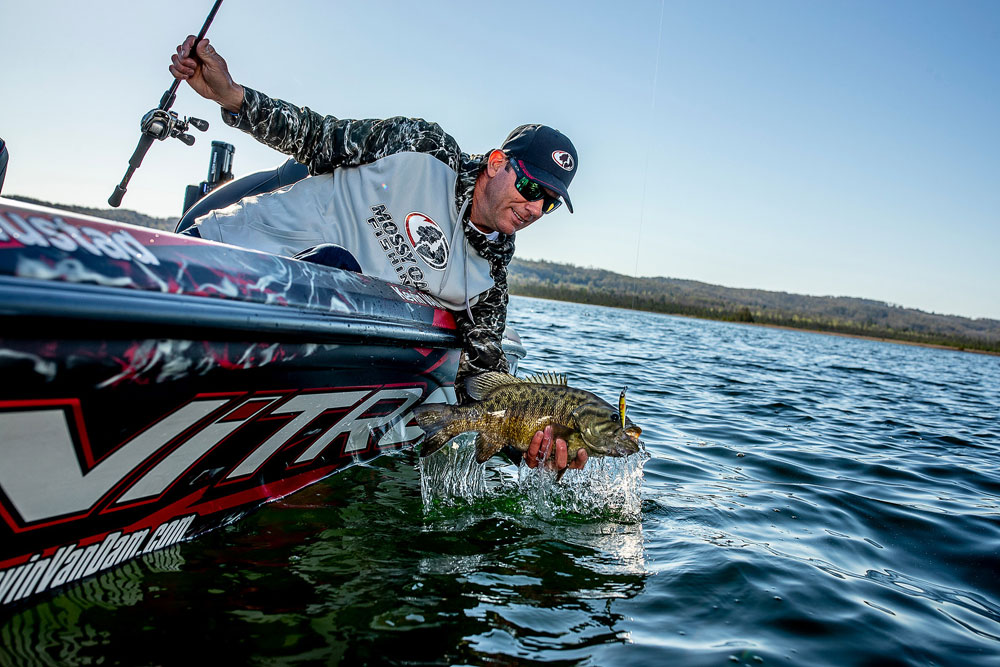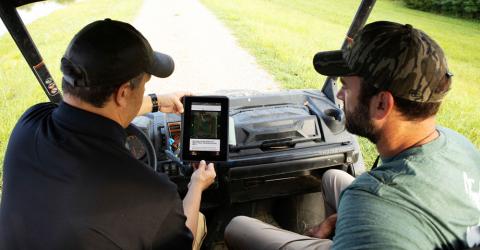provided by John E. Phillips
Mossy Oak Fishing Pro Kevin VanDam of Kalamazoo, Michigan, is the only professional fisherman to win four Bassmaster Classics and three Major League Fishing cups. Kevin’s one of the fastest fishermen finding and catching bass in every tournament he attends. He’s a very detailed angler and a keen observer of everything around him when he’s on the water. Sights and signals that most bass fishermen completely overlook are some of the keys to VanDam’s success. Mossy Oak wanted to know how VanDam finds and catches bass during a time of the year where many lakes will contain pre-spawn, spawning and post-spawn bass.
What You Need to Know Before You Bass Fish from Mid-February to Mid-March

During this time of the year, depending on where you’re fishing, you’ll have all three phases of the bass spawn present. How do you determine where to fish, and how do you catch the bass?
VanDam: Before I get to a lake, I make some basic decisions about what should be happening on the lake. The water temperature of the lake and the geographic region where the lake is are my first considerations. The water temperature usually tells me in what condition most of the bass in the lake will be. If the water temperature is below 60 degrees, that’s when I assume that most of the bass in the lake will be in the pre-spawn phase of their annual migration. If the water temperature is in the mid-60s to the upper 70s, I believe that most of the bass will be spawning or heading to the spawning grounds. The only time during this time of the year where you’ll locate post-spawn fish is usually in the Deep South in Texas, Florida and the lakes on the lower portion of the Gulf Coast region. These bass generally will be in post-spawn mode, if the water temperature is 74 degrees or more.
The second assumption I make is where the lake I’m fishing is located. For instance, I know that if the lake I’m fishing is in north Alabama, and I’ll be fishing at the end of February, those bass won’t be spawning but will be in the pre-spawn mode. The bass spawn is based on the time of the year, the length of the days, the water temperature and the moon phase - whether a new moon or a full moon is present that can help to trigger the spawn. Even if the water temperature is too cold, if a full moon occurs, and the time of year for the bass spawn has arrived, bass will move up to the spawning site and start looking for places to spawn. But knowing the moon phase is very important, as is the water temperature and the time of the year. Then I’ll know where I should find bass, even before I reach the lake.
Next I need to understand how and when bass move in and out of the spawning flats. For instance, the way that bass move on Lake Okeechobee in Florida is different than the way they move in Alabama’s Lake Guntersville. On Lake Okeechobee, the entire lake can be a spawning flat, and the bass will move in and out to different types of grass there during the spawning season. The type of lake I’ll be fishing also gives me cues as to where the bass should be. For instance, because the terrain of the lake dictates so much about where and when the bass spawn, I need to know whether the lake is a highland or a lowland reservoir, a natural lake, a river or a tidal body of water. Many factors go into determining where bass should be on their spawning migration that I can know by evaluating the factors I’ve mentioned.
Get more fishing tips from Kevin VanDam with Mossy Oak University on Mossy Oak GO.




























